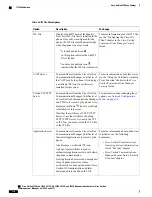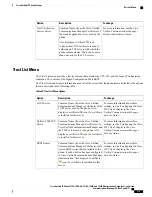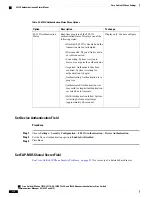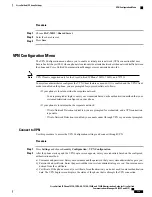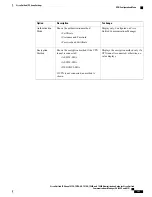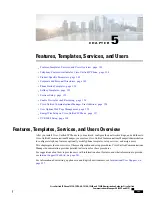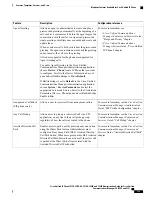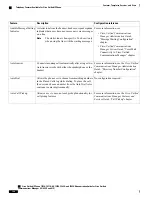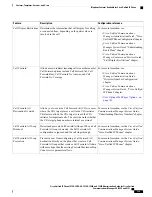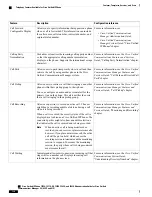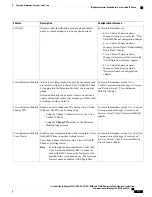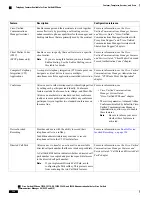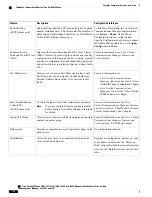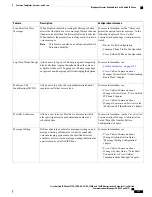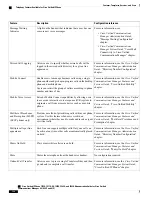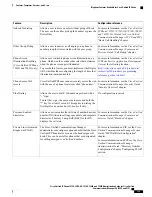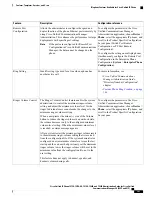
Configuration reference
Description
Feature
To configure the parameter in the Cisco
Unified Communications Manager
Administration application, choose
Device
>
Phone
, select the appropriate IP phones, and
scroll to the Product Specific Configuration
Layout pane.
To configure the setting on multiple phones
simultaneously, enable Automatic Port
Synchronization in the Enterprise Phone
Configuration (
System
>
Enterprise Phone
Configuration
).
When the Cisco Unified Communications Manager
administrator uses the Remote Port Configuration feature
to set the speed and duplex function of an IP phone
remotely, loss of packets can occur if one port is slower
than the other.
The Automatic Port Synchronization feature synchronizes
the ports to the lowest speed among the two ports, which
eliminates packet loss. When automatic port
synchronization is enabled, it is recommended that both
ports be configured for autonegotiate. If one port is
enabled for autonegotiate and the other is at a fixed speed,
the phone synchronizes to the fixed port speed.
If both the ports are configured for fixed speed,
the Automatic Port Synchronization feature is
ineffective.
Note
The Remote Port Configuration and Automatic
Port Synchronization features are compatible
only with IEEE 802.3AF Power of Ethernet
(PoE) switches. Switches that support only Cisco
Inline Power are not compatible. Enabling this
feature on phones that are connected to these
types of switches could result in loss of
connectivity to Cisco Unified Communications
Manager, if the phone is powered by PoE.
Note
Automatic Port
Synchronization
For more information, see:
•
Cisco Unified Communications
Manager Administration Guide
,
“
Cisco
Unified IP Phone Configuration
”
chapter
•
Cisco Unified Communications
Manager System Guide
,
“
Cisco Unified
IP Phones
”
chapter
•
Cisco Unified Communications
Manager Features and Services Guide
,
“
Barge and Privacy
”
chapter
Allows a user to join a nonprivate call on a shared phone
line. Barge features include cBarge and Barge.
•
cBarge adds a user to a call and converts it into a
conference, allowing the user and other parties to
access conference features.
•
Barge adds a user to a call but does not convert the
call into a conference.
The phones support Barge in two conference modes:
•
Built-in conference bridge at the target device (the
phone that is being barged). This mode uses the
Barge
softkey.
•
Shared conference bridge. This mode uses the
cBarge
softkey.
Barge (and cBarge)
For more information, see the
Cisco Unified
Communications Manager Features and
Services Guide
,
“
External Call Transfer
Restrictions
”
chapter.
Prevents users from transferring an external call to another
external number.
Block External to
External Transfer
Cisco Unified IP Phone 7975G, 7971G-GE, 7970G, 7965G, and 7945G Administration Guide for Cisco Unified
Communications Manager 9.0 (SCCP and SIP)
127
Features, Templates, Services, and Users
Telephony Features Available for Cisco Unified IP Phone


